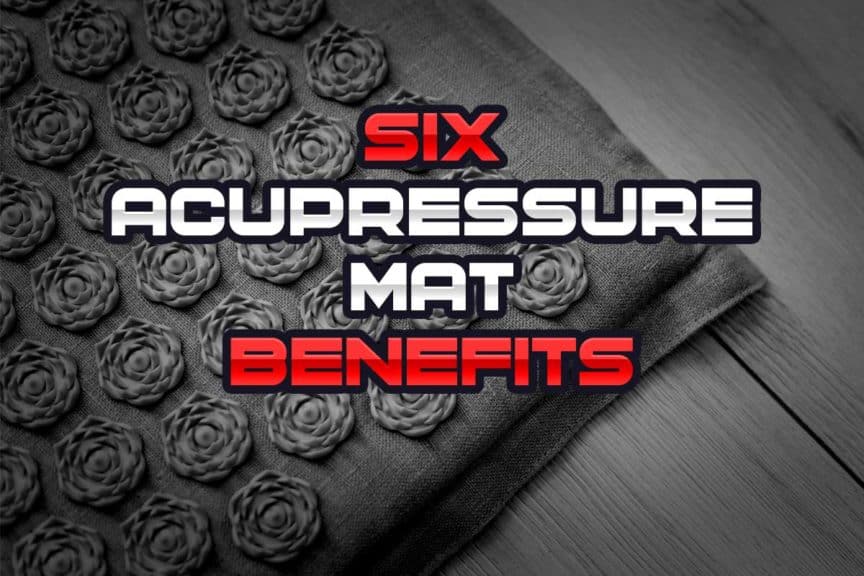As a strength and conditioning specialist who has pushed his body quite extensively over the years AND as someone who has made heavy financial investments into his education and career for being a physical therapist, I’m a big fan of therapeutic devices that can help ease some of my aches and pains while doing so on the cheap.
The benefits of acupressure mats can include pain reduction without the need to take medication, acupuncture-like effects without any needles, versatility with treating multiple body parts, simplicity, safety of use, and their relatively inexpensive purchase cost.
Like any other therapeutic device out there, each person will likely respond differently to its use. The pain-relieving benefits will likely be best achieved when combined with other treatment modalities. Nonetheless, these mats can act as a great adjunct to help you feel better and even move better.
If you’re curious about the details of these potential benefits and are considering using an acupressure mat on yourself, keep on reading as this article will help unpack some information around why using a mat could be a wise therapeutic move for you to make.
ARTICLE OVERVIEW
Click/tap on any of the bulleted headlines below to instantly jump to that section of the article!
- Benefit 1: Reducing the need to take medication
- Benefit 2: No need for needles
- Benefit 3: Prolonged pain relief from endorphin release
- Benefit 4: Use on multiple body parts
- Benefit 5: Inexpensive and highly portable
- Benefit 6: Simplicity and safety of use
- Bonus: How to relax while using a mat
Related article: Using an Acupressure Mat: Five Pro Tips for Greater Pain Relief
Disclaimer: While I am a physical therapist, I am not YOUR physical therapist. As a result, I cannot tell you whether or not any treatments mentioned on this website or in this article may or may not be appropriate for you, including using an acupressure mat. By following any information within this post, you are doing so at your own risk. You are advised to seek appropriate medical advice for any pain you may be experiencing.
Benefit 1: Reducing the need to take medication
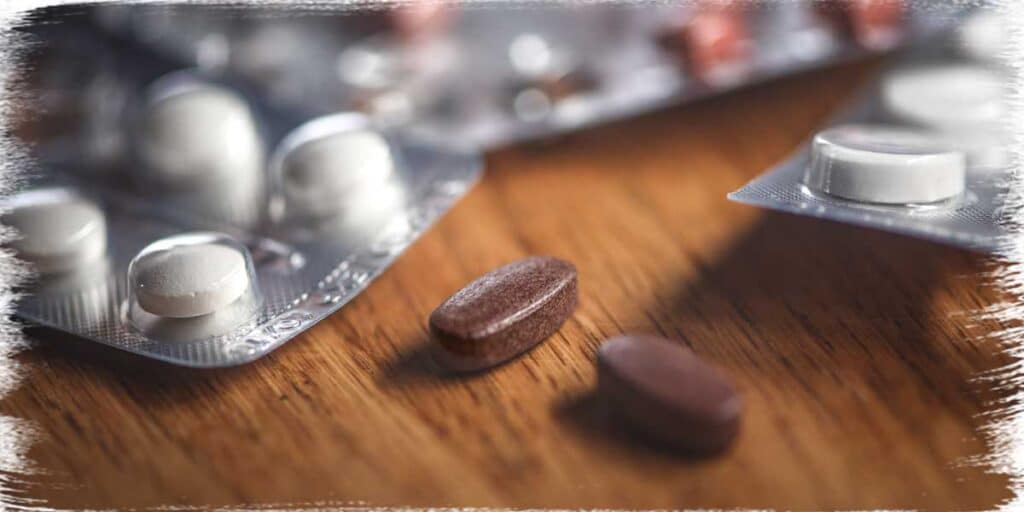
I’m certainly a fan of avoiding the use of pharmacological medicine for aches and pains whenever possible. This is, of course, NOT to say that I think pharmacology has no place in life or anything of the sorts just so we’re clear. Modern medicine really is a miracle, and there are all sorts of times in which it is easily warranted and needed.
But for musculoskeletal aches and pains, my preference is to always go the drug-free route, if possible. This is especially true when dealing with the nagging aches and pains that are more of an annoying nuisance than anything else. Giving my body the chance to get some pain relief via its own endogenous (made from within the body) mechanisms is the superior route to take when compared to taking drugs.
Related article: Supplements: Free Resources to Tell if Yours are Safe and Effective
In addition to the physical aspect of avoiding the usage of pain-relieving drugs, there’s the nice potential benefit of saving some money as well. If you’ve already got an acupressure mat laying around or purchase one (they’re not expensive), you can use it for years on end, which can be a much cheaper alternative than just always paying for pain-relieving medication.
Again, there are times where I really tweak something up in my body and do need some medicine for pain relief. Still, regular usage of just laying on my mat does a great job at reducing some of the nagging aches and pains that I’m prone to feeling after a long, laborious day or after completing an extensive training block in my weightlifting program.
Benefit 2: No need for needles
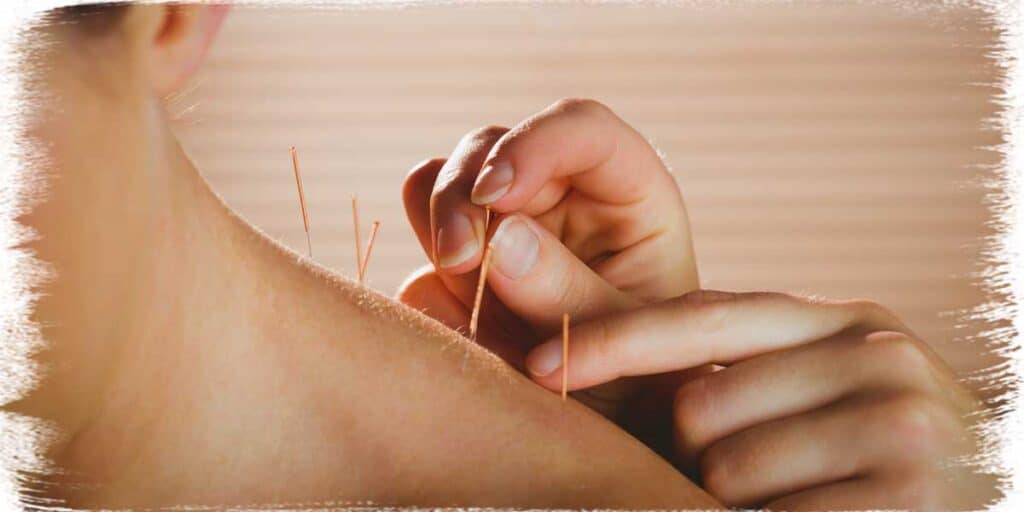
Many people who would like to experience pain relief have heard about the relaxation and pain-relieving effects that traditional acupuncture can offer, and many of these individuals would be more than willing to give it a try if it weren’t for fear of needles holding them back.
We all have fears and phobias within life, and the fear of needles tends to be a more common one within humans. So, it’s unfortunate that many people who would like to get relaxation benefits or pain-relieving benefits from traditional acupuncture are held back by this fear.
This is where trying (and/or using) an acupressure mat can be a great alternative. While acupressure mats do not have needles, they do have many small, plastic spikes that press into (but not through) the skin, which attempt to elicit the same relaxation and pain-relieving benefits traditional acupuncture needles can provide.
Related article: How to Reduce Soreness After Dry Needling – Five Proven Tips
Speaking from my Western-trained standpoint, the spikes of the acupressure mat can stimulate the skin (and thus the body itself) with pressure that helps the body release pain-relieving chemicals in the body, known as endorphins (more on this in the following benefit below). While acupuncture needles can also stimulate the body to release these endorphins, they can’t do so if a person avoids needles due to a fear of them. When this is the case, an acupressure mat makes for a great alternative strategy since it can potentially achieve similar effects without needles.
Benefit 3: Prolonged pain relief from endorphin release

Another great benefit of using an acupressure mat is the prolonged pain relief that can occur after getting off the mat. While prolonged pain relief can be attributed to different factors, one of the more commonly attributed factors is the release of endorphins within the body.
Endorphins are chemicals produced within the body that can reduce pain perception when present in high enough concentrations. While the exact physiology of how endorphins achieve this effect is beyond the scope of this article, here are some basics to read up on if you’re curious to learn more of the exact details.
- Acupressure for emotional healing
- The Anti-Inflammatory Actions of Auricular Point Acupressure for Chronic Low Back Pain
- The Effects of Acupressure on Pain Severity in Female Nurses with Chronic Low Back Pain
The body releases endorphins in response to the sustained pressure from the mat’s spikes interacting with the skin. Since endorphins are released into the bloodstream, the pain-relieving effects can occur throughout the entire body (since blood travels to every part of the body).
Benefit 4: Use on multiple body parts
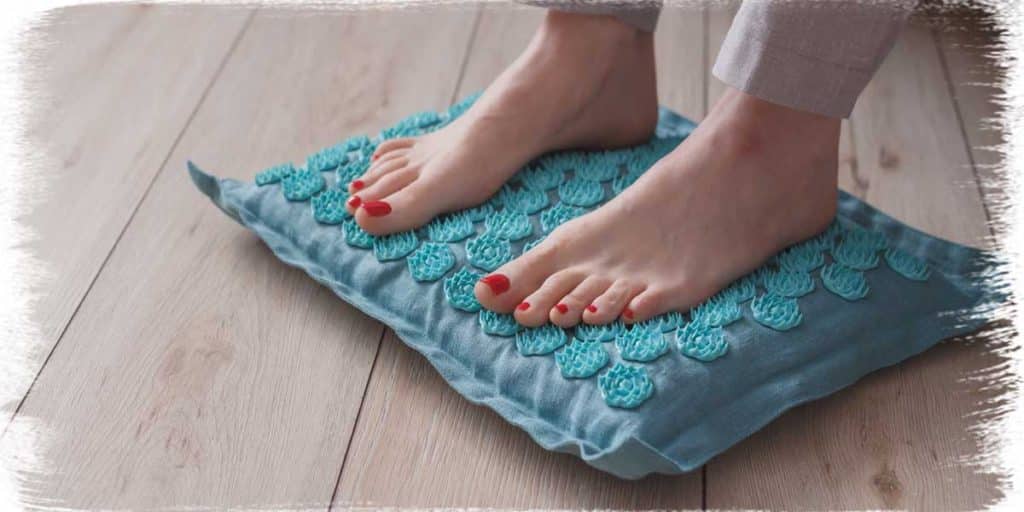
Acupressure mats can be used on multiple body parts, which is a tremendous benefit when using one. This particular benefit is one that not everyone is familiar with.
While most people are familiar with using an acupressure mat for their middle and upper back (by laying down on it), acupressure mats can, in fact, be used on other areas of the body, such as the legs, bottoms of the feet, and even the arms. The mid-upper back is indeed the most common spot, but don’t discount the benefits of using the mat elsewhere on the body (provided it is appropriate for you to do so).
Many people tend to report favorable relaxation benefits when using acupressure mats on the bottom of their feet, calves, or both. Using the mat on these body parts can feel quite nice after standing for a long day or after an intense training session that leaves your legs and feet tired and/or aching.
Benefit 5: Inexpensive and highly portable
As an individual who has lived the “broke student” lifestyle for many years while moving to multiple locations throughout undergraduate studies and graduate school, I’m a big fan of therapeutic modalities and exercise equipment that happen to be inexpensive and portable. In case you’re not aware, acupressure mats check both of these boxes.
I’ve never had any brand-name loyalty to acupressure mats. The one I have is one I picked up off of Amazon years ago, and it’s done the job just fine. As long as it’s got a mat with some spikes on it, I feel that it should do the trick just fine.
Related Article: The Massive Benefits of Going to Physical Therapy BEFORE Injury
Since the mats are flexible, they can be rolled up in about two seconds and can even be stuffed into a carrying bag (some even come with their own bag). While I tend to keep mine in my bedroom, one can easily take it wherever they choose, seeing how it takes up virtually no space and weighs about two pounds at most.
Benefit 6: Simplicity and safety of use
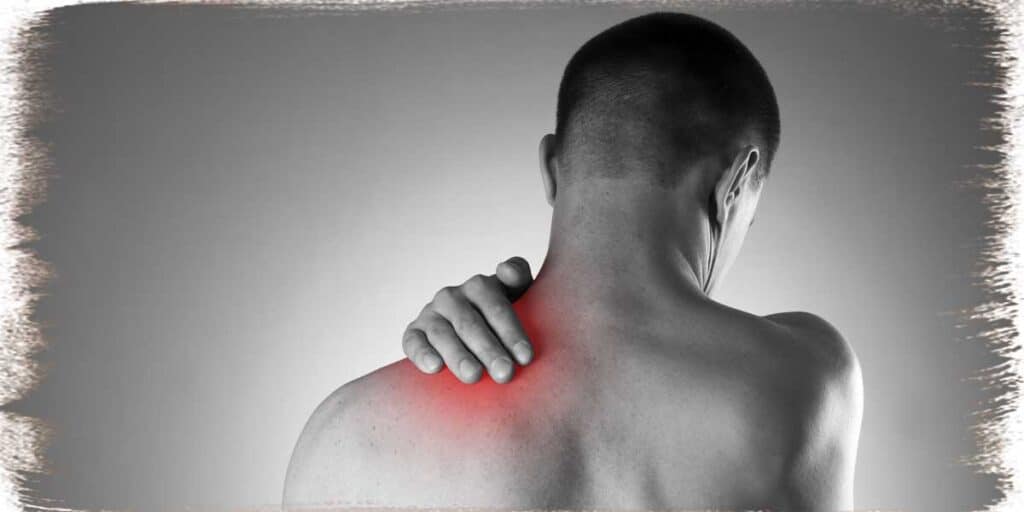
Simplicity and safety are two words that are always music to my ears and likely yours as well. I’m not a fan of overly complex therapeutic equipment (or anything overly complex, for that matter), and I’m certainly not a fan of therapeutic modalities in which their risk outweighs their potential reward.
When it comes to acupressure mats, they check both of these essential boxes quite nicely. Straightforward to use, very low risks with potentially high rewards – just my kind of style!
Simplicity
Using an acupressure mat is about as simple as it gets: lay it on the ground or some other surface (such as your bed mattress) and then lay still on it for a handful of minutes. The sore, achy, or tight area should be the area targeted with pressure. Since most people tend to have tight, achy backs (such as myself), this is the most common body area that many people use the mat for (myself included).
Safety
You’ll, of course, want to make sure that it’s safe for you to be using an acupressure mat in the first place (check with your doctor or other qualified healthcare professional) since there are medical conditions that may not be ideal for using the mat. Still, provided that it’s safe to do so, you can’t really mess it up as long as you’re using common sense throughout the process.
Since there is no skin penetration when using an acupressure mat (unlike traditional acupuncture), there is no real risk of infection. As well, one certainly doesn’t need formal medical training to lay down on the mat. Just make sure that the intensity of the spikes feels strong yet tolerable on your skin.
Bonus: How to relax while using a mat
The only thing better than getting pain relief when laying on an acupressure mat is getting maximal relaxation at the same time. And guess what? There’s good evidence in the literature that shows relaxation/reducing stress can have pain-relieving effects all on its own.
Further pain reduction combined with feeling more relaxed? Sign me up!
If you want some of the specifics of what science has found with the connection between breathing and pain reduction, check out these scientific articles:
- The Effect of Deep and Slow Breathing on Pain Perception, Autonomic Activity, and Mood Processing—An Experimental Study
- Relaxation & Pain Management: The relaxation response can play a role in managing chronic and acute pain.
- Can Slow Deep Breathing Reduce Pain? An Experimental Study Exploring Mechanisms
Here’s how to do it:
To maximize relaxation when using your mat, you’re going to want to incorporate breathing techniques, which, if done correctly, can result in improvements in pain reduction – and that’s the reason why most people lay on the mat in the first place.
My preferred breathing technique is deep diaphragmatic breathing. This breathing technique involves having the stomach expand outwards while breathing in (this helps to maximize the amount of air inhaled into the lungs).
Take a deep breath in through your nose and hold it for 1-3 seconds, based on what you’re comfortable with. Breathe out slowly through your mouth, exhaling until you feel like your lungs are back to their normal resting volume. It should take you twice as long to breathe out as it does for you to breathe in (a 2:1 ratio).
Perform this for as many repetitions as you’d like. Between five to ten is a good start if you’re new to this breathing technique. If you get dizzy or lightheaded, go back to your regular breathing pattern until it passes. Try again after that, based on your own needs and desires.
Lay on the mat while performing this breathing technique and sink into the mat a bit deeper with each breath you take. Focus on your breathing throughout the process, and you’ll likely be surprised at how therapeutic and relaxing this breathing technique really is! (I certainly was when I tried it a handful of years ago!)

Hi! I’m Jim Wittstrom, PT, DPT, CSCS, Pn1.
I am a physical therapist who is passionate about all things pertaining to strength & conditioning, human movement, injury prevention and rehabilitation. I created StrengthResurgence.com in order to help others become stronger and healthier. I also love helping aspiring students and therapists fulfill their dreams of becoming successful in school and within their clinical PT practice. Thanks for checking out my site!

